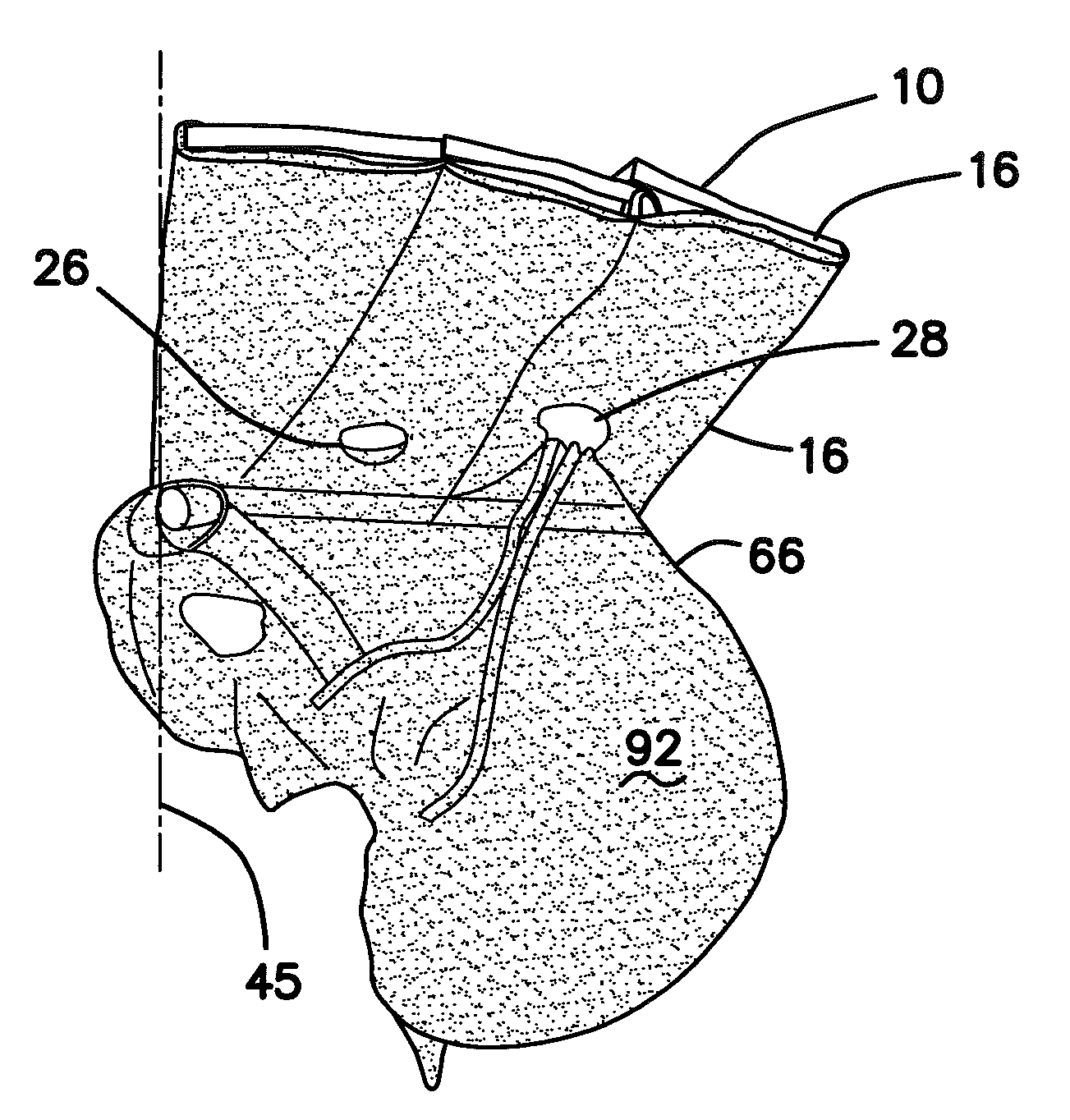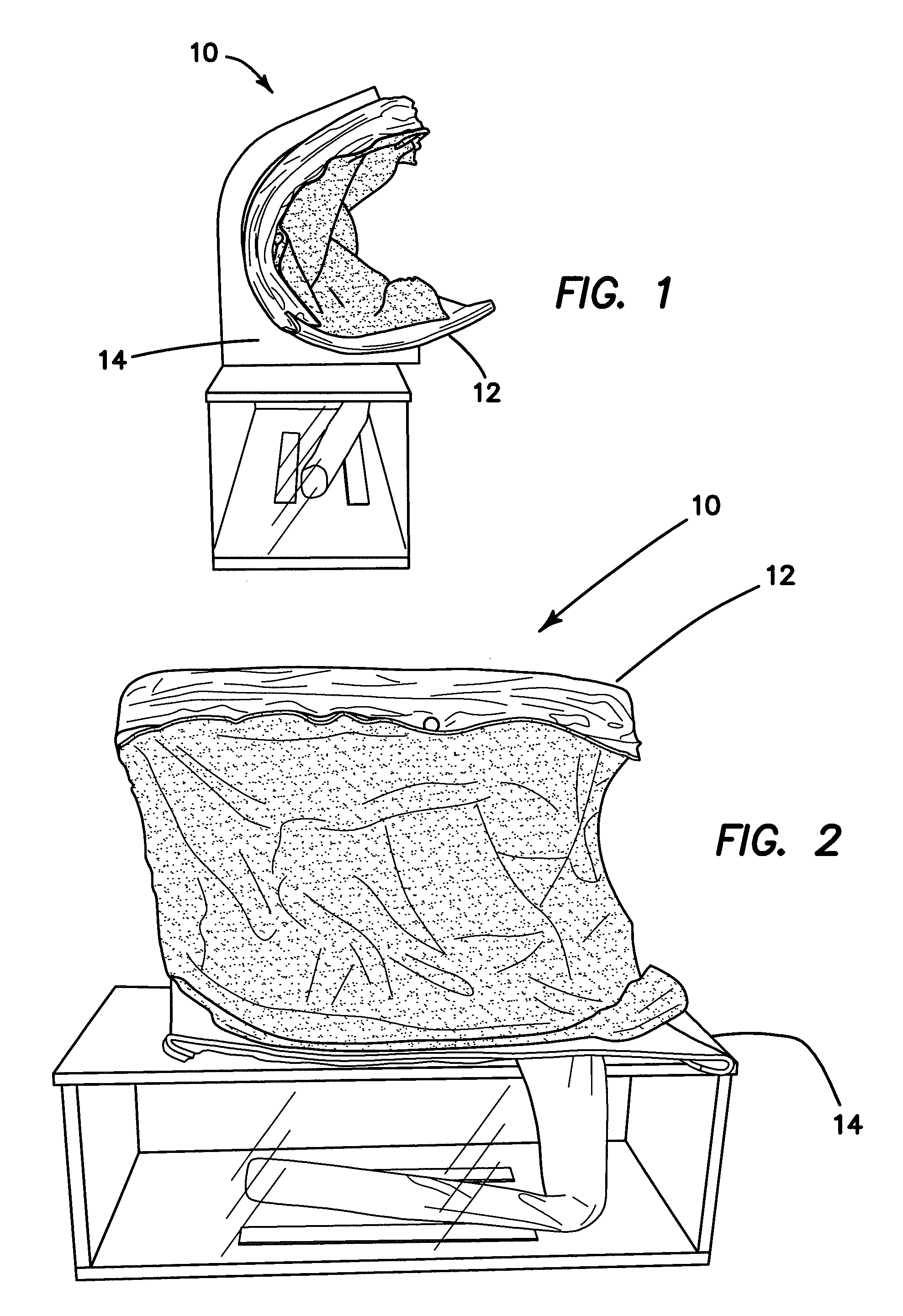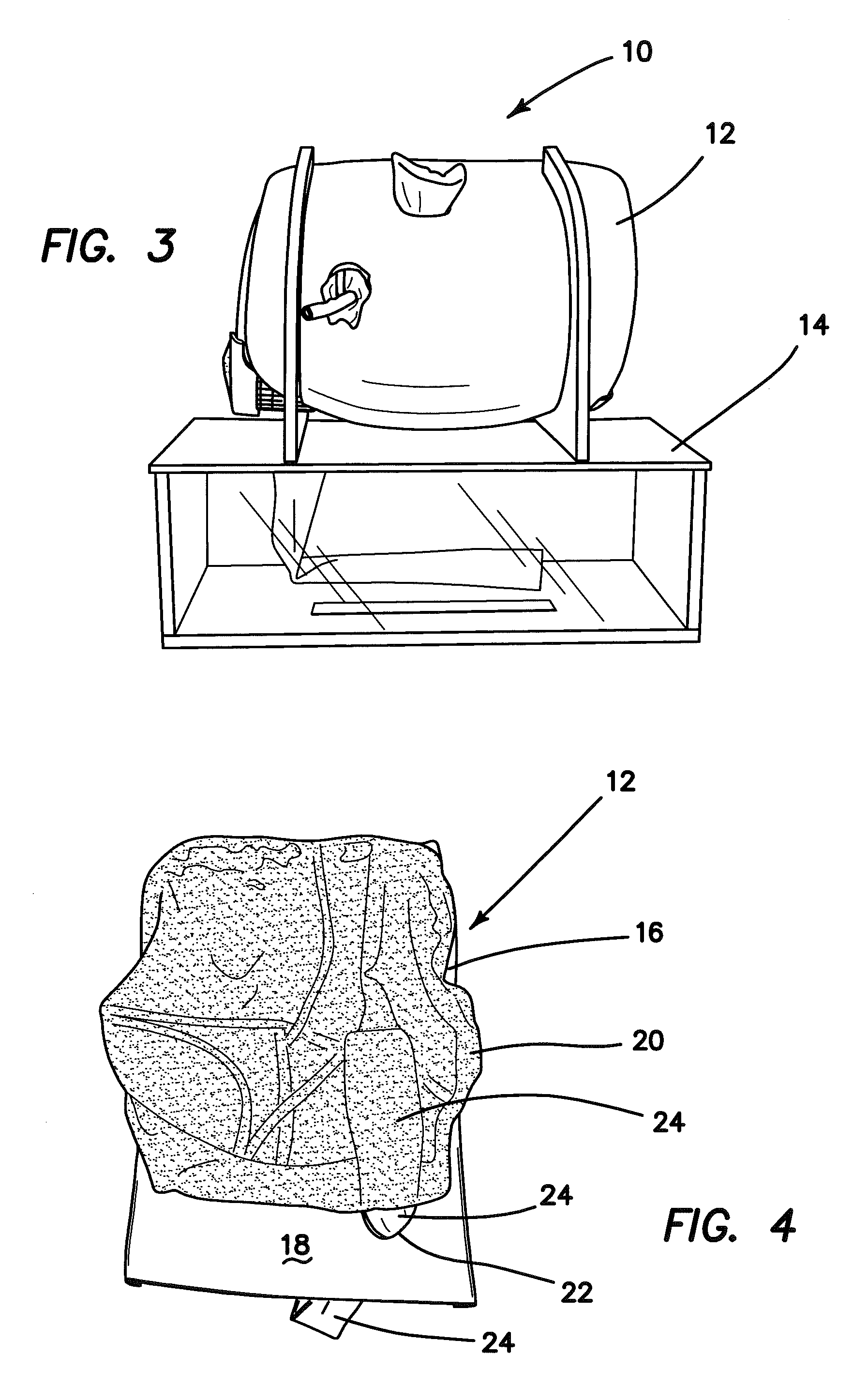Hernia model
a model and hernia technology, applied in the field of surgical training tools, can solve the problems of difficult tep approach, difficult laparoscopic repair, difficult to repair the internal organs and fascia, etc., and achieve the effect of realistic resiliency of the model and safe repair of the hernia
- Summary
- Abstract
- Description
- Claims
- Application Information
AI Technical Summary
Benefits of technology
Problems solved by technology
Method used
Image
Examples
Embodiment Construction
[0032]Referring to FIGS. 1-3, there is shown a side, front and rear view, respectively, of a hernia model 10 according to the present invention. The hernia model 10 includes an anatomical portion 12 supported by a frame 14. As seen most clearly in FIG. 1, the substantially planar anatomical portion 12 is maintained in a curved configuration such that the major part of the anatomical portion 12 is substantially C-shaped forming a half or open generally cylindrical configuration. The concavity formed inside the C-shaped disposition of the anatomical portion 12 advantageously simulates an insufflated space between an artificial muscular abdominal wall generally located at the top of the C shape and the simulated peritoneum 18 generally located at the bottom of the C shape. The simulated muscular abdominal wall forms approximately the top half or more than the top half of the C-shaped curve; whereas, the bottom half or less than the bottom half of the C-shaped curve is formed by the sim...
PUM
 Login to View More
Login to View More Abstract
Description
Claims
Application Information
 Login to View More
Login to View More - R&D
- Intellectual Property
- Life Sciences
- Materials
- Tech Scout
- Unparalleled Data Quality
- Higher Quality Content
- 60% Fewer Hallucinations
Browse by: Latest US Patents, China's latest patents, Technical Efficacy Thesaurus, Application Domain, Technology Topic, Popular Technical Reports.
© 2025 PatSnap. All rights reserved.Legal|Privacy policy|Modern Slavery Act Transparency Statement|Sitemap|About US| Contact US: help@patsnap.com



